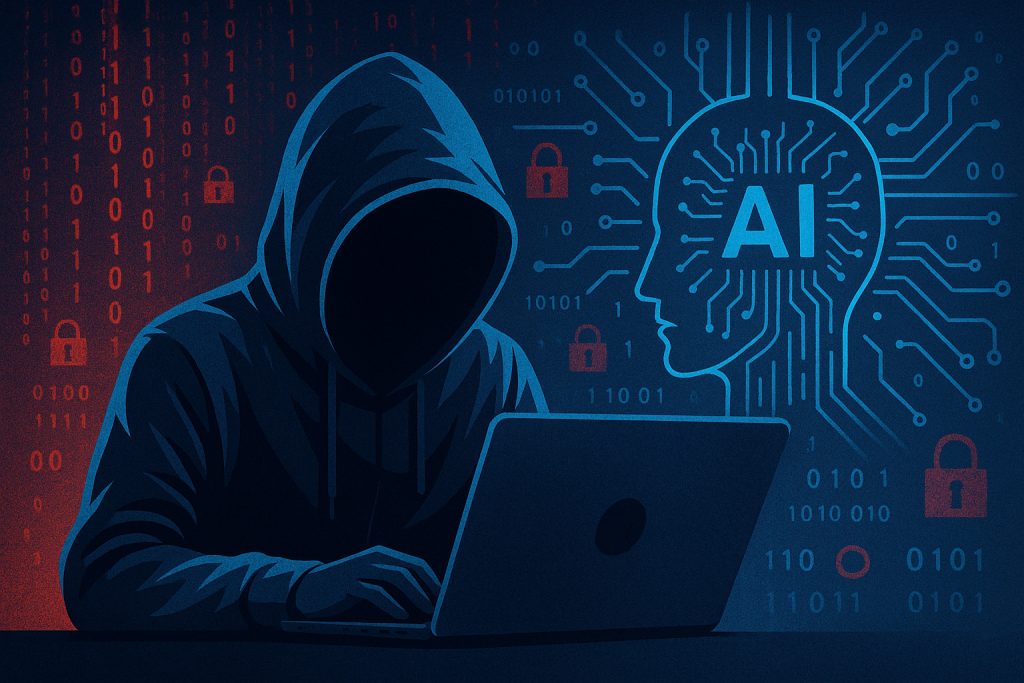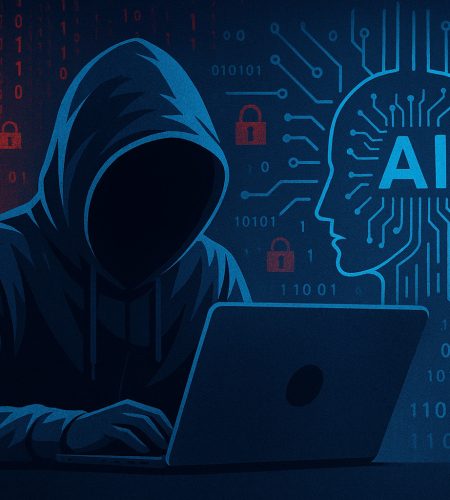These aren’t the sloppy scams of the past. Today, artificial intelligence allows hackers to send personalized phishing emails, clone voices, and even rewrite malware in real-time. In this new era, cybercrime is faster, harder to detect, and far more dangerous.
This post breaks down how hackers are using AI in 2025, real-world examples of these AI-powered cyberattacks, and how you can stay protected in an increasingly intelligent threat landscape.

How Hackers Are Using AI in 2025 to Supercharge Cybercrime
Artificial intelligence is reshaping the cybercrime world. Hackers are using AI in 2025 to automate attacks, scale operations, and bypass traditional security systems. Here’s how:
1. AI-Generated Phishing Emails Fool Millions
Gone are the days of typo-filled emails from “Nigerian princes.” Hackers now use tools like FraudGPT and WormGPT to generate near-perfect phishing emails tailored to each victim. These AI-generated emails can mimic writing styles, corporate tone, and even reference past conversations.
Real Example: In 2024, a Hong Kong employee transferred $25 million after receiving a deepfake video call from someone impersonating an executive.
2. AI Malware That Learns and Adapts
Hackers are using AI in 2025 to create self-learning malware that rewrites its own code to avoid detection. This makes traditional antivirus software useless against evolving threats.
Case Study: The 2023 BlackMamba malware used AI to modify its code on the fly, evading multiple security systems.
3. Faster, Smarter Password Cracking
AI has made password cracking more efficient than ever. Predictive algorithms allow cybercriminals to guess passwords 100x faster and automate credential stuffing attacks using leaked data.
Shocking Stat: In 2024, 81% of data breaches involved weak or stolen passwords (Verizon DBIR).
ALSO READ: This Is How Hackers Get Into Your Facebook | In Under 5 Minutes
Why AI Cyberattacks Are So Dangerous in 2025
The reason hackers using AI in 2025 are so effective is because AI makes everything faster, smarter, and scalable.
AI Attacks at Scale
One hacker can now use AI to launch millions of targeted attacks in minutes. AI handles reconnaissance, vulnerability scanning, and exploitation automatically.
Evading Traditional Security
Signature-based tools struggle to catch AI-powered threats that evolve and mimic normal user behavior. Deepfakes and voice clones make social engineering even more convincing.
Realistic Impersonations
Cybercriminals can now clone voices, forge realistic documents, and generate videos that fool even the savviest employees.
How to Protect Yourself from AI Cyber Threats
To defend against how hackers are using AI in 2025, you must combine human awareness with AI-powered tools.
Use AI-Based Security Tools
Tools like CrowdStrike, SentinelOne, and Darktrace use AI to detect unusual behavior in real time. These platforms are your best defense against constantly evolving threats.
Train Your Team
Regular phishing simulations and cybersecurity awareness programs can help employees spot scams that AI generates. Human vigilance is still powerful.
Enable Multi-Factor Authentication (MFA)
MFA can prevent 99.9% of automated attacks (Microsoft). Even if your password is compromised, this extra layer stops intruders.
Stay Updated
Follow CISA alerts, patch software regularly, and stay on top of cybersecurity news to stay ahead of threats.
Final Thoughts: Will Hackers Always Be a Step Ahead?
Hackers are using AI in 2025 more effectively than ever, but cybersecurity experts are also using AI to defend. With tools like predictive AI, behavioral monitoring, and global cooperation, we have the power to fight back.
Action Steps:
- ✅ Upgrade to AI-powered cybersecurity solutions
- ✅ Train your team continuously
- ✅ Treat every email, link, and call with caution
In this AI cyberwar, awareness and adaptation are your best weapons.


Comments